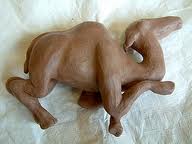Camel fetal wastage in Sokoto
Keywords:
Camel, Foetal wastage, Sokoto, ReproductionAbstract
The study was conducted to evaluate the incidence of foetal wastage following indiscriminate slaughter of pregnant camel in the Sokoto state over a period of seven months. A total of 3172 camels were slaughtered, out of which, 1534 were females; with a total of 682 (44.46%) fetuses recovered duaring the study period.441 fetuses belongs to the first trimester, 173 fetuses belongs to the second trimester, and 68 fetuses belongs to the third trimester.408 of the fetuses were male, 274 fetuses were female and 36 fetuses were at undifferetial stage.The implication of these losses was discussed and way of preventing the dilema was sugested. There was significant difference (P>0.05) between the number of fetuses recovered and the period of the study (month).
References
Abdulkadir, U., Jiya, E.Z., Kosu, S.A., 2008. Survey of Foetal Wastages: A Case Study of Makurdi Abattoir in Benue
State from 1997 to 2002. Pakistan J. Nutr. 7 (3), 450-452.
Abdullahi, A.K., 1985. Phd. Thesis. The University of Northingham. School of Agriculture, Leicestershire UK.
Andersen, H.R., 1975. The influence of slaughter weight and level of feeding on growth rate, feed conversion and
carcass composition of bulls. Livest. Prod. Sci. 2, 341-355.
CBN, 1983. Central Bank of Nigeria. Anim. Rep.
FAO/ WHO, 1983. Food and Agricultural Organization/ World Health Organization joint report.
Garba, S., Hassan, W.A., Akingbemi, 1992. Foetal wastage through slaughter of pregnant cattle at sokoto Abattoir.
Tropical Vet. 10, 123-126.
Germen, D., 1975. Survey of livestock marketing and prices in Harare province. Dire Dawa, Ethiopia.
Johnston, J.D., Moody, W.G., Boling, J.A., Bradley, N.W., 1981. Influence of breed type, sex, feeding systems and
muscle bundle size on bovine fibre type characteristics. J. Food Sci. 46, 1760-1765.
Maltin, C.A., Sinclair, K.D., Warriss, P.D., Grant, C.M., Porter, A.D., Delday, M.I., Warkup, C.C., 1998. The effects of
age at slaughter, genotype and finishing system on the biochemical properties, muscle fibre type
characteristicsand eating quality of bull beef from suckled calves. Anim. Sci. 66,341-348.
Ogwuegbu, O.S., Oke, B.O., Osuagwuth, A.I.A., Akusu, M.U., Aire, T.A., 1987. Preliminary survey on kid losses at a
typical abattoir in Ibadan. Abstract 12th Annu. Conf. Nig. Soc. Anim. Prod. pp,71.
Oyekunle, M.A., Olubanjo O.O., Fasina, O.E., 1992. Foetal wastage in abattoirs and its implication; situation report
from Ogun State, Nigeria. Nig. J. Anim. Prod. 19, 57-63.
Oyenuga, V.A., 1987. Fundamental Strategies for livestock production in Nigeria. A Mud pillar supporting a weak
structure. Nig. J. Anim. Prod. 14, 5-11.
Payne, C.A., Hunt, M.C., Warren, K.E., Hayden, J.M., Williams, J.E., Hedrick, H.B., 1992. Histochemical properties of
four bovine muscles as influenced by compensatory gain and growth impetus. Proceedings of the 38th
international congress on meat science and technology. Clermont-Ferrand. 2, 121-124.
Toulmm, 1984. Calves lost through pregnant cows slaughtering: A particular case in Younde Abattoir Camroom)
Rev. Elebv. Med. Vet. Pays.Top. 37, 70- 72.
Uko, O.J., Ataja, A.M., Arung, B.M., Usman, B.U., 1999. Sex, age, distribution and carcass yield of sheep and goats
slaughtered at Sokoto abattoir. Sokoto J. Vet. Sci. 1 (1), 29-35.

Downloads
Published
How to Cite
Issue
Section
License
Copyright (c) 2012 A. Bello, M. A. Umaru, B. Saidu, S. Garba, M. Jibir, A. Mahmuda, S. A. Hena, A. A. Raji, Y. S. Baraya, A. A. Abubakar

This work is licensed under a Creative Commons Attribution-NonCommercial-NoDerivatives 4.0 International License.



